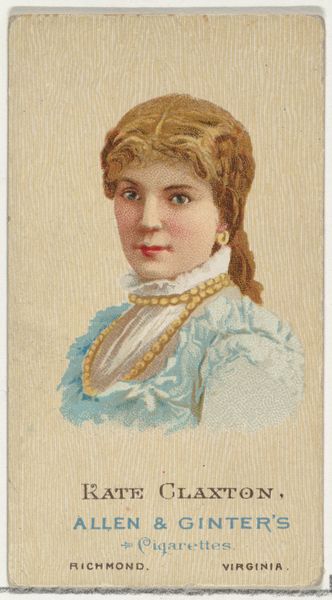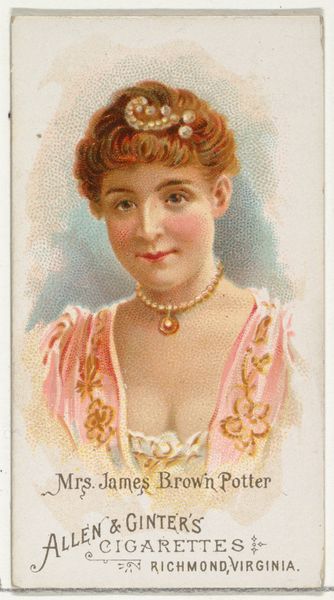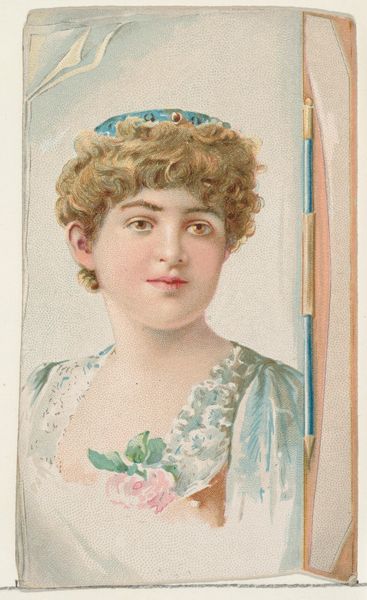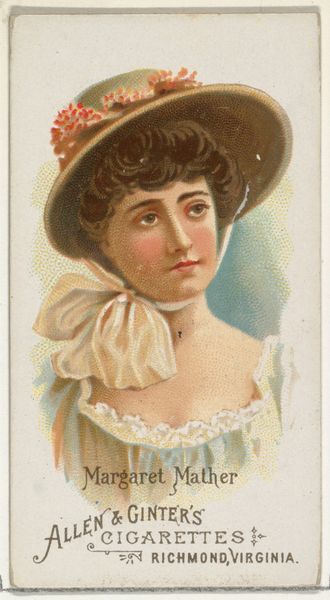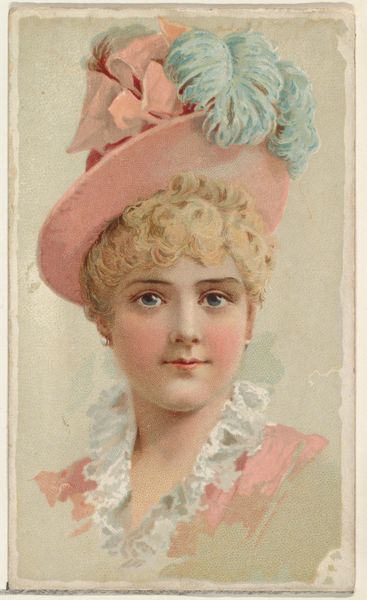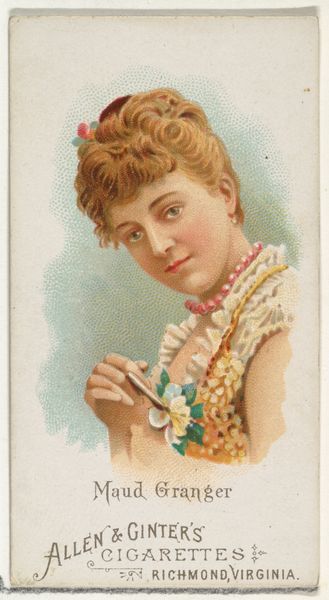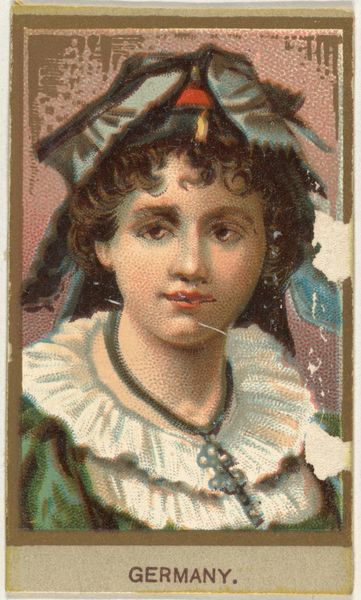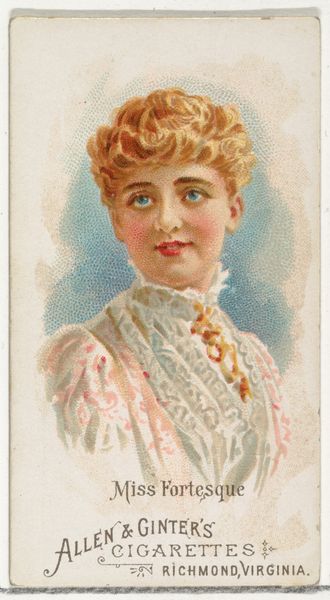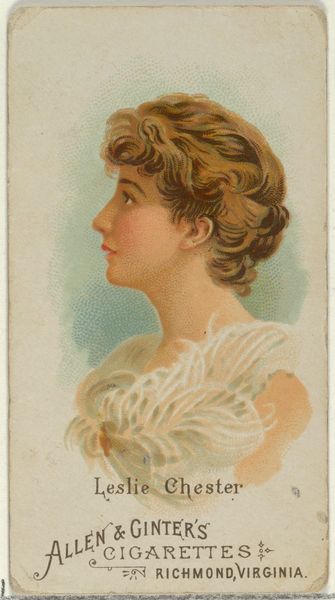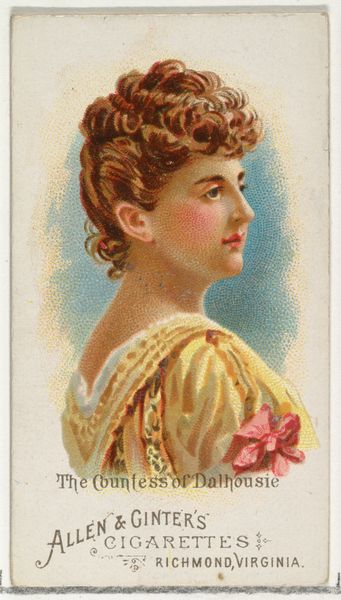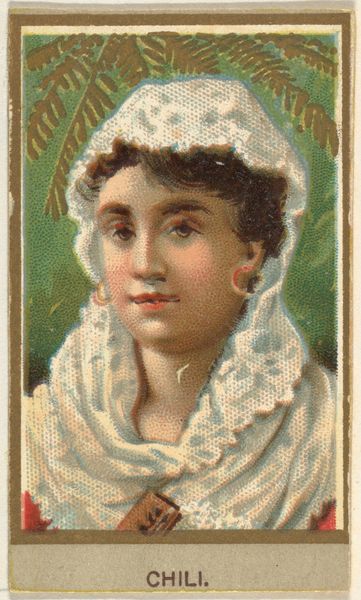
Actress wearing white lace cap, from Stars of the Stage, First Series (N129) issued by W. Duke, Sons & Co. to promote Honest Long Cut Tobacco 1890
0:00
0:00
drawing, print
#
portrait
#
drawing
#
character portrait
# print
#
portrait reference
#
portrait head and shoulder
#
animal portrait
#
men
#
animal drawing portrait
#
facial portrait
#
portrait art
#
portrait character photography
#
fine art portrait
#
celebrity portrait
Dimensions: Sheet: 4 3/16 × 2 1/2 in. (10.6 × 6.4 cm)
Copyright: Public Domain
Editor: Here we have "Actress wearing white lace cap, from Stars of the Stage," a print made around 1890 by W. Duke, Sons & Co. It feels like a celebration of femininity and performance, but also, perhaps, an artifact of how women were packaged and sold during that time. What do you see in this piece? Curator: What I find striking is how this image, seemingly innocent as a promotional item, participates in the construction of celebrity and idealised womanhood within a burgeoning consumer culture. Consider the title – 'Stars of the Stage' – it places this actress within a constellation of fame, manufactured and distributed by a tobacco company. How does this positioning impact our reading of the portrait? Editor: Well, it makes me think about how an actress's image was a commodity, used to sell products and perpetuate certain beauty standards. It makes her talent almost secondary. Curator: Precisely. This image isn't just about celebrating an individual; it’s about using her likeness to reinforce social and economic power structures. Notice the lace cap, the pearl choker - they denote a certain kind of bourgeois femininity that was highly valued. Who had access to this idealized womanhood? What kind of labor was involved? And what were the consequences for women who didn't conform? Editor: I see what you mean. The image, while appearing pretty and harmless on the surface, reveals a lot about the complex dynamics of gender, class, and consumerism during the late 19th century. Curator: Exactly! And by interrogating these dynamics, we can start to unpack the complex ways in which images, even those seemingly innocuous, can shape our understanding of the world and reinforce existing inequalities. Editor: That's fascinating. It’s a reminder to look beyond the surface of art and think critically about its broader social implications. Thank you.
Comments
No comments
Be the first to comment and join the conversation on the ultimate creative platform.
